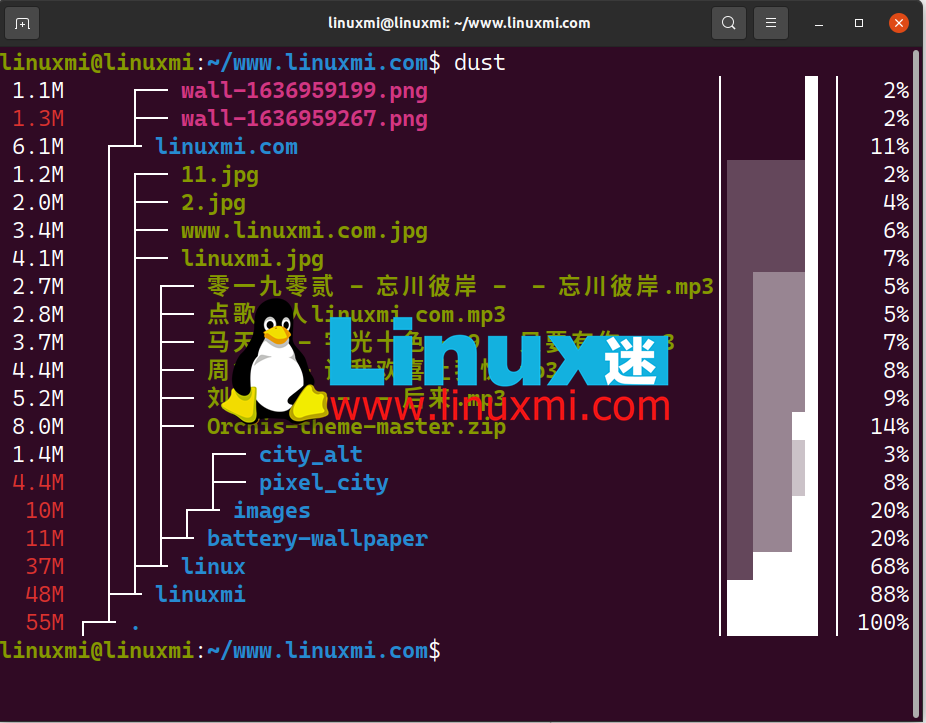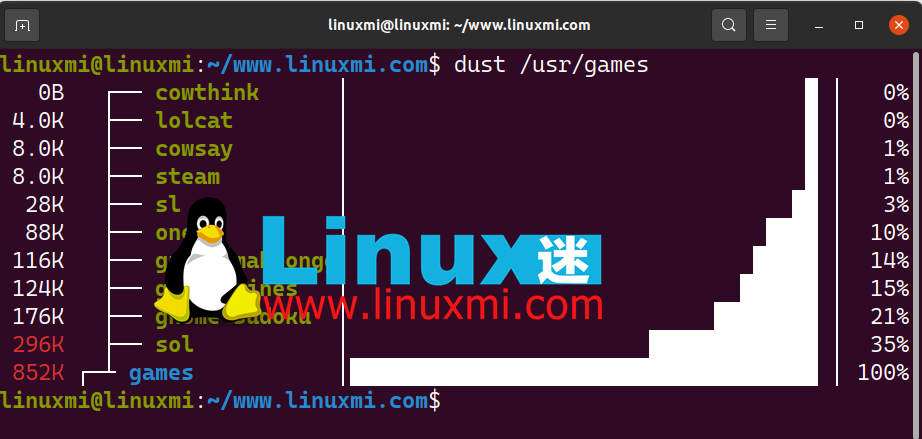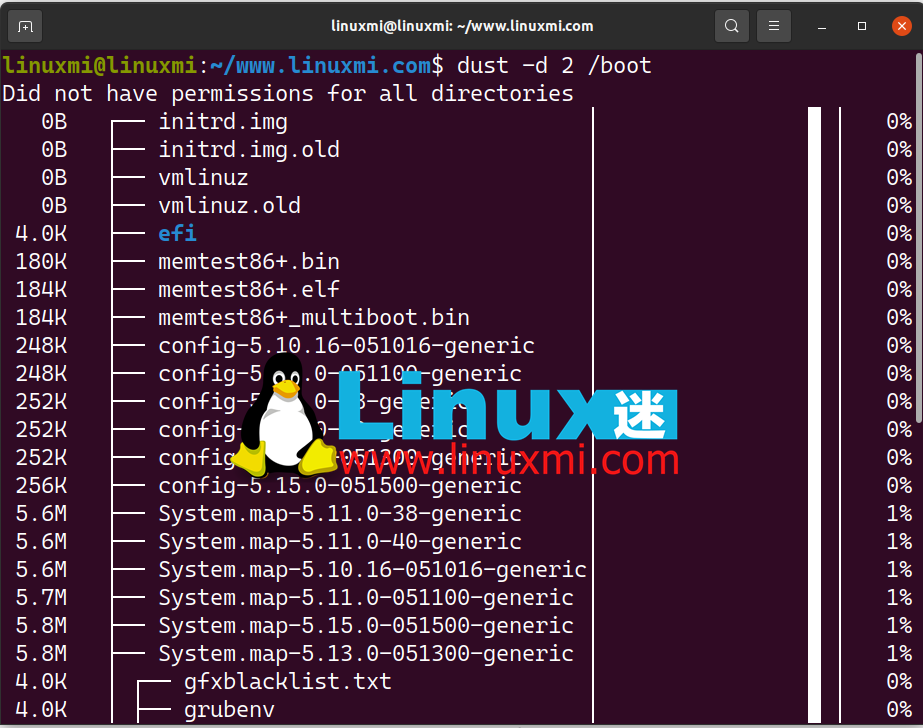 System Tutorial
System Tutorial
 LINUX
LINUX
 How to use Linux commands to clear hard drive space and give your system a new lease of life
How to use Linux commands to clear hard drive space and give your system a new lease of life
How to use Linux commands to clear hard drive space and give your system a new lease of life
In the process of using Linux systems, we often encounter insufficient disk space. When there is insufficient disk space, the system will run extremely slowly or even crash. Using Linux commands to clear hard disk space is a very simple and effective method that can give your system a new lease of life. In this article, we will introduce several commonly used Linux commands to help you clear hard drive space and improve system performance and stability.
If you work on the Linux command line, you should be familiar with the du command. Understanding commands like du, which can quickly return information about disk usage, is one of the ways the command line can improve programmer productivity. However, if you're looking for a way to save even more time and make your life easier, then check out dust, a more intuitive version of the du command written in Rust.
In short, dust is a tool that provides file types and metadata. If you run dust in a directory, it will report the disk utilization of that directory in a variety of ways. It provides a very useful chart that tells you which folder is using the most disk space. If you have nested folders, you can see the percentage of space used by each folder.
Install dust
You can install dust using Rust’s Cargo package manager:
linuxmi@linuxmi:~/www.linuxmi.com$ cargo install du-dust

Alternatively, you might find it in a software repository on Linux, or on macOS, using MacPorts or Homebrew.
Exploredust
dustIssuing the command on a directory returns a chart showing its contents and the percentage of each item in a tree format.
linuxmi@linuxmi:~/www.linuxmi.com$ dust

Applydust to a specific directory:
linuxmi@linuxmi:~/www.linuxmi.com$ dust /usr/games

The -r option displays the output in reverse order, with the root at the bottom:
linuxmi@linuxmi:~/www.linuxmi.com$ dust -r /usr/games
Use dust -d 2 to return two levels of subdirectories and their disk utilization:
linuxmi@linuxmi:~/www.linuxmi.com$ dust -d 2 /boot

in conclusion
The beauty of dust is that it is a small, simple, and easy-to-understand command. It uses color schemes to represent the largest subdirectories, making it easy to visualize your directories. This is a popular project and contributions are welcome.
Through the introduction of this article, I believe you have learned about several commonly used Linux commands, which can help you clear hard disk space and improve system performance and stability. When your system runs out of disk space, don't panic, using these commands can help you solve the problem easily. At the same time, in daily use, you should also pay attention to cleaning up unnecessary files and data in the system to maintain sufficient disk space. In this way, your system will be more stable and efficient.
The above is the detailed content of How to use Linux commands to clear hard drive space and give your system a new lease of life. For more information, please follow other related articles on the PHP Chinese website!

Hot AI Tools

Undresser.AI Undress
AI-powered app for creating realistic nude photos

AI Clothes Remover
Online AI tool for removing clothes from photos.

Undress AI Tool
Undress images for free

Clothoff.io
AI clothes remover

AI Hentai Generator
Generate AI Hentai for free.

Hot Article

Hot Tools

Notepad++7.3.1
Easy-to-use and free code editor

SublimeText3 Chinese version
Chinese version, very easy to use

Zend Studio 13.0.1
Powerful PHP integrated development environment

Dreamweaver CS6
Visual web development tools

SublimeText3 Mac version
God-level code editing software (SublimeText3)

Hot Topics
 1377
1377
 52
52
 How to solve permission issues when using python --version command in Linux terminal?
Apr 02, 2025 am 06:36 AM
How to solve permission issues when using python --version command in Linux terminal?
Apr 02, 2025 am 06:36 AM
Using python in Linux terminal...
 How to open web.xml
Apr 03, 2025 am 06:51 AM
How to open web.xml
Apr 03, 2025 am 06:51 AM
To open a web.xml file, you can use the following methods: Use a text editor (such as Notepad or TextEdit) to edit commands using an integrated development environment (such as Eclipse or NetBeans) (Windows: notepad web.xml; Mac/Linux: open -a TextEdit web.xml)
 Four ways to implement multithreading in C language
Apr 03, 2025 pm 03:00 PM
Four ways to implement multithreading in C language
Apr 03, 2025 pm 03:00 PM
Multithreading in the language can greatly improve program efficiency. There are four main ways to implement multithreading in C language: Create independent processes: Create multiple independently running processes, each process has its own memory space. Pseudo-multithreading: Create multiple execution streams in a process that share the same memory space and execute alternately. Multi-threaded library: Use multi-threaded libraries such as pthreads to create and manage threads, providing rich thread operation functions. Coroutine: A lightweight multi-threaded implementation that divides tasks into small subtasks and executes them in turn.
 Can the Python interpreter be deleted in Linux system?
Apr 02, 2025 am 07:00 AM
Can the Python interpreter be deleted in Linux system?
Apr 02, 2025 am 07:00 AM
Regarding the problem of removing the Python interpreter that comes with Linux systems, many Linux distributions will preinstall the Python interpreter when installed, and it does not use the package manager...
 What is the Linux best used for?
Apr 03, 2025 am 12:11 AM
What is the Linux best used for?
Apr 03, 2025 am 12:11 AM
Linux is best used as server management, embedded systems and desktop environments. 1) In server management, Linux is used to host websites, databases, and applications, providing stability and reliability. 2) In embedded systems, Linux is widely used in smart home and automotive electronic systems because of its flexibility and stability. 3) In the desktop environment, Linux provides rich applications and efficient performance.
 How is Debian Hadoop compatibility
Apr 02, 2025 am 08:42 AM
How is Debian Hadoop compatibility
Apr 02, 2025 am 08:42 AM
DebianLinux is known for its stability and security and is widely used in server, development and desktop environments. While there is currently a lack of official instructions on direct compatibility with Debian and Hadoop, this article will guide you on how to deploy Hadoop on your Debian system. Debian system requirements: Before starting Hadoop configuration, please make sure that your Debian system meets the minimum operating requirements of Hadoop, which includes installing the necessary Java Runtime Environment (JRE) and Hadoop packages. Hadoop deployment steps: Download and unzip Hadoop: Download the Hadoop version you need from the official ApacheHadoop website and solve it
 Do I need to install an Oracle client when connecting to an Oracle database using Go?
Apr 02, 2025 pm 03:48 PM
Do I need to install an Oracle client when connecting to an Oracle database using Go?
Apr 02, 2025 pm 03:48 PM
Do I need to install an Oracle client when connecting to an Oracle database using Go? When developing in Go, connecting to Oracle databases is a common requirement...
 Unable to log in to mysql as root
Apr 08, 2025 pm 04:54 PM
Unable to log in to mysql as root
Apr 08, 2025 pm 04:54 PM
The main reasons why you cannot log in to MySQL as root are permission problems, configuration file errors, password inconsistent, socket file problems, or firewall interception. The solution includes: check whether the bind-address parameter in the configuration file is configured correctly. Check whether the root user permissions have been modified or deleted and reset. Verify that the password is accurate, including case and special characters. Check socket file permission settings and paths. Check that the firewall blocks connections to the MySQL server.



